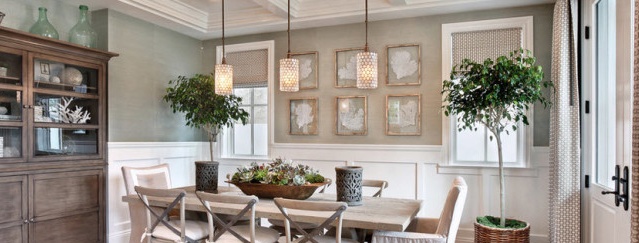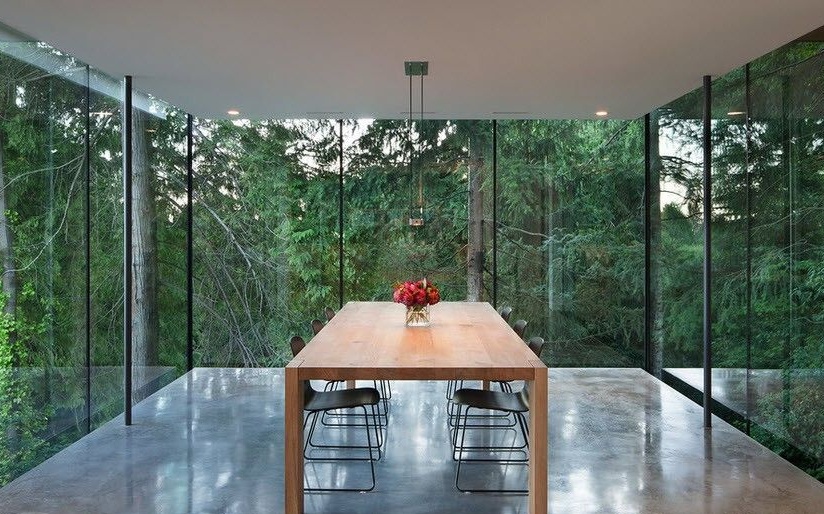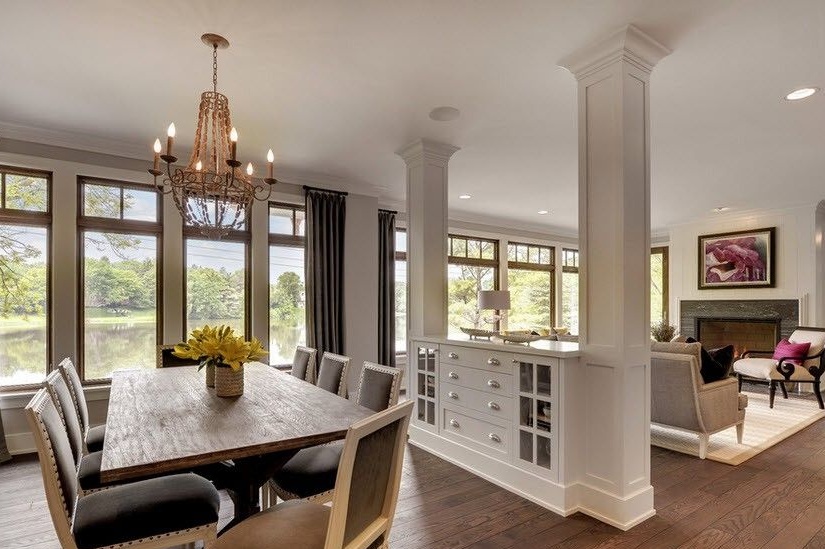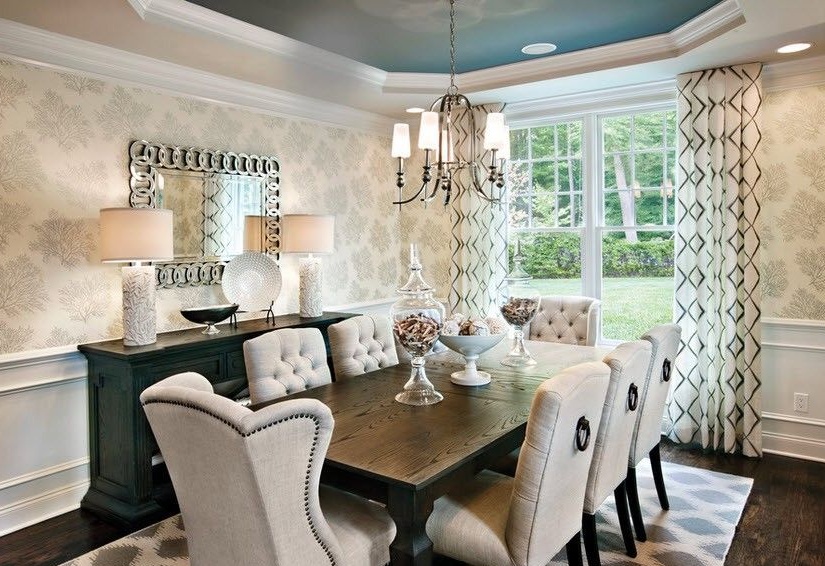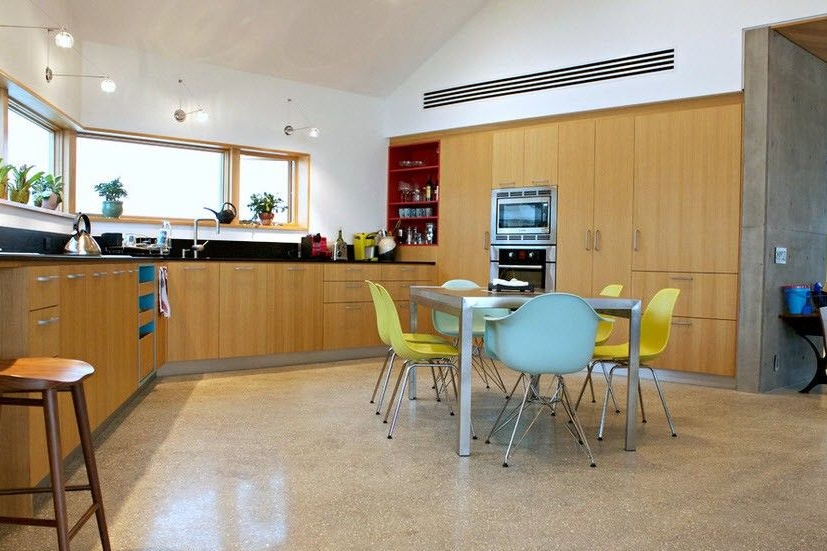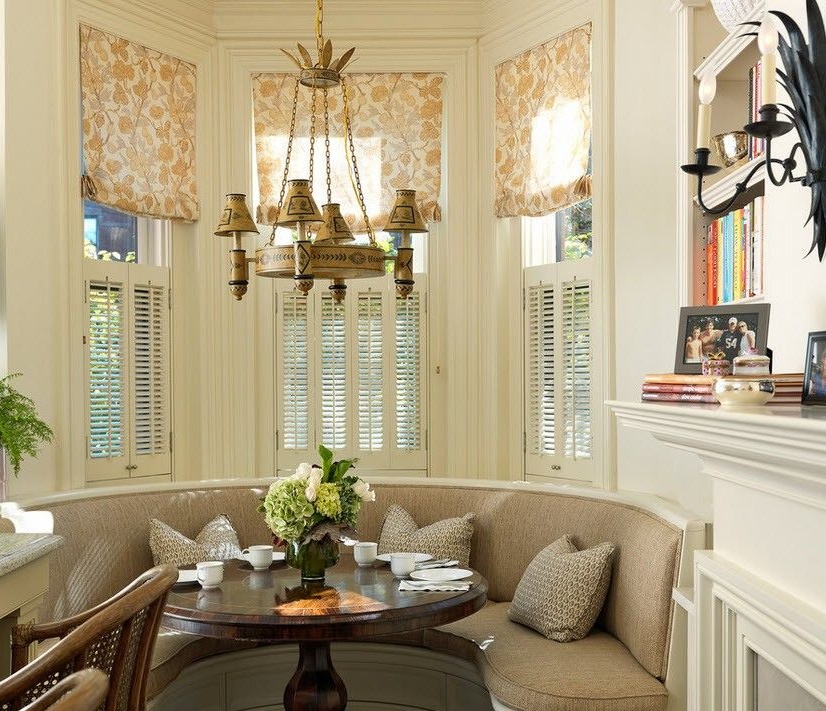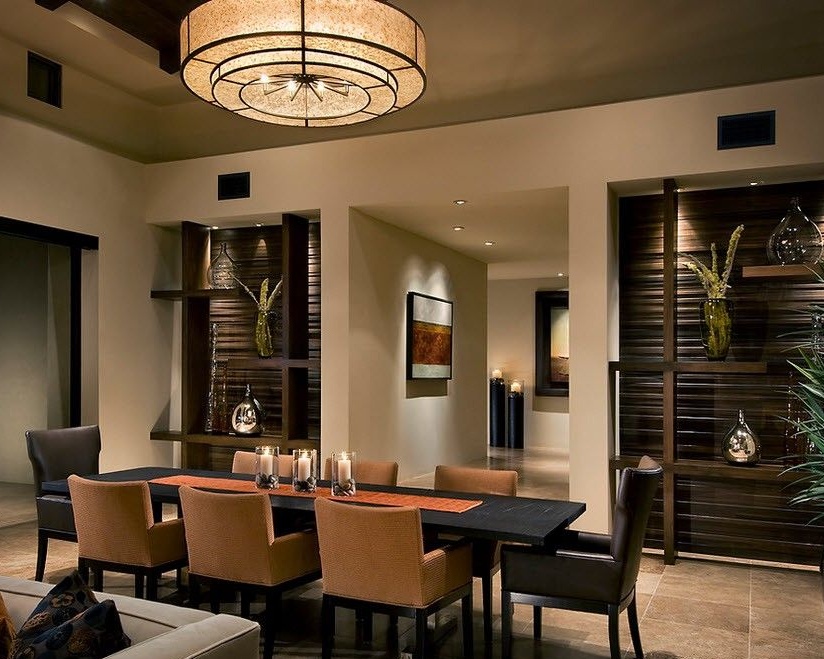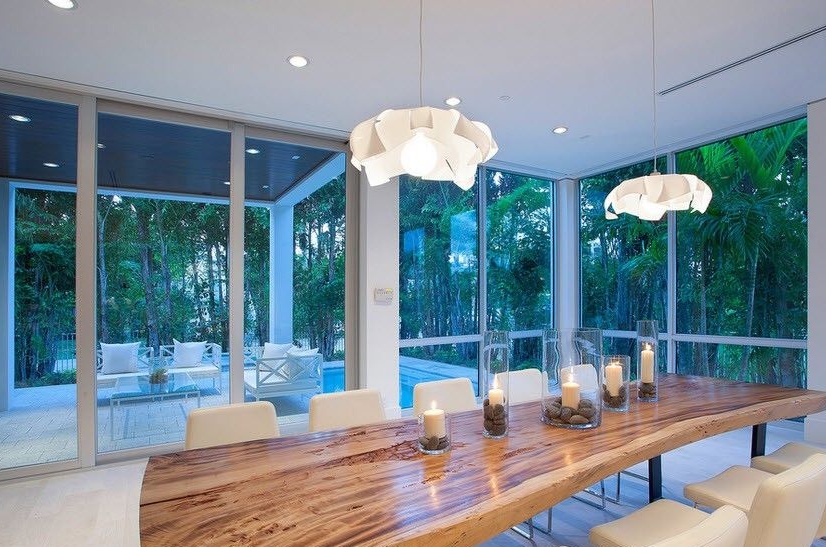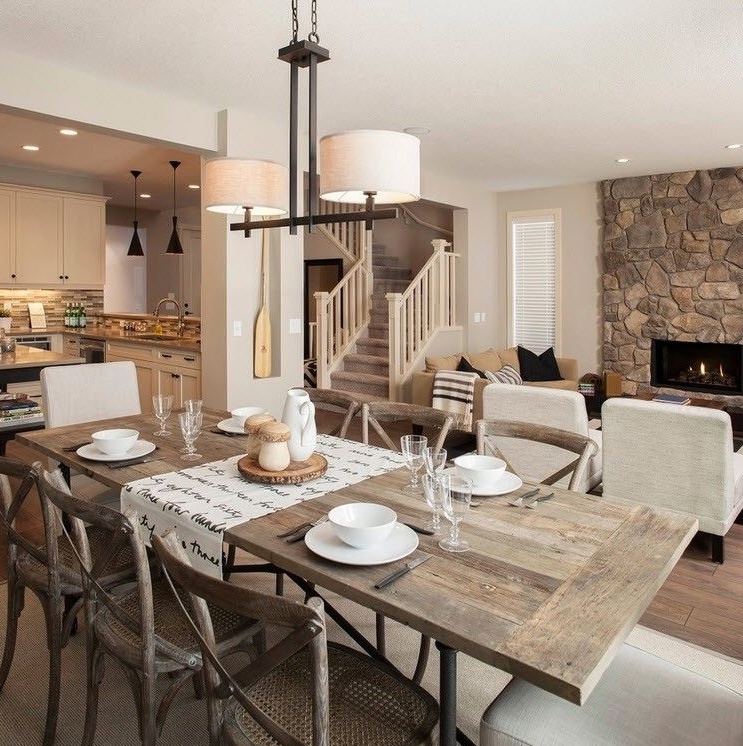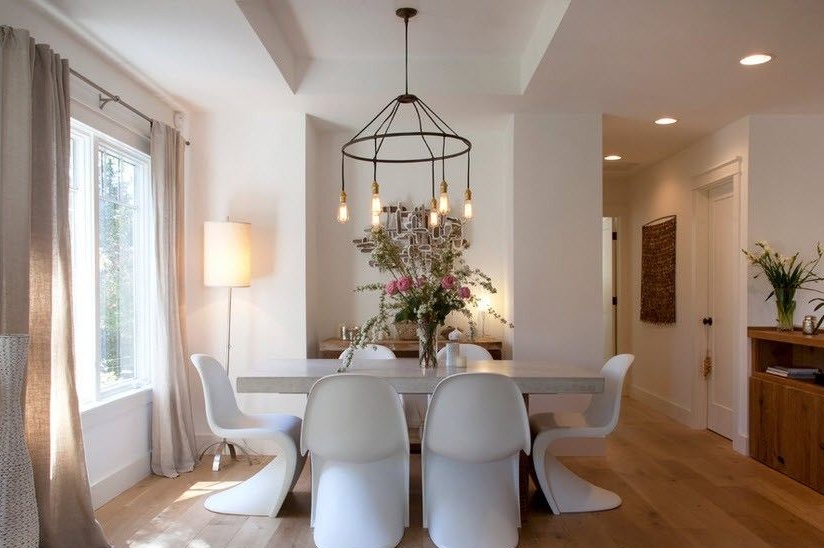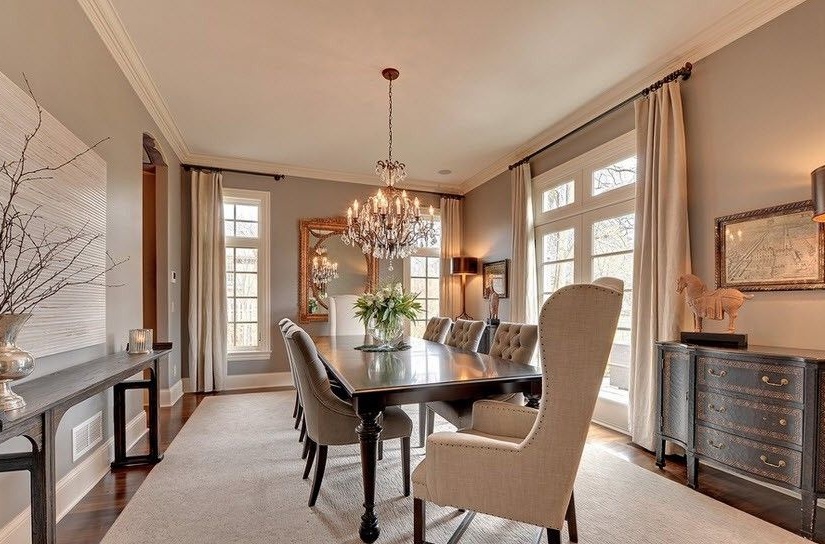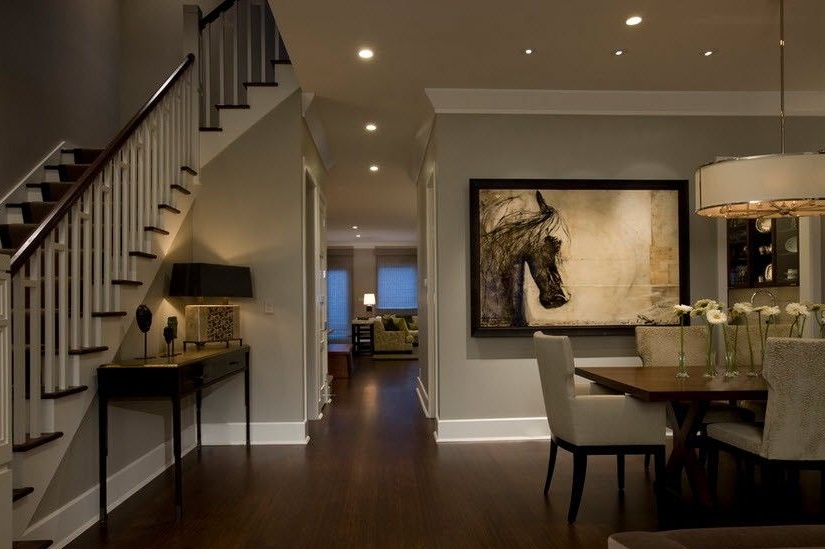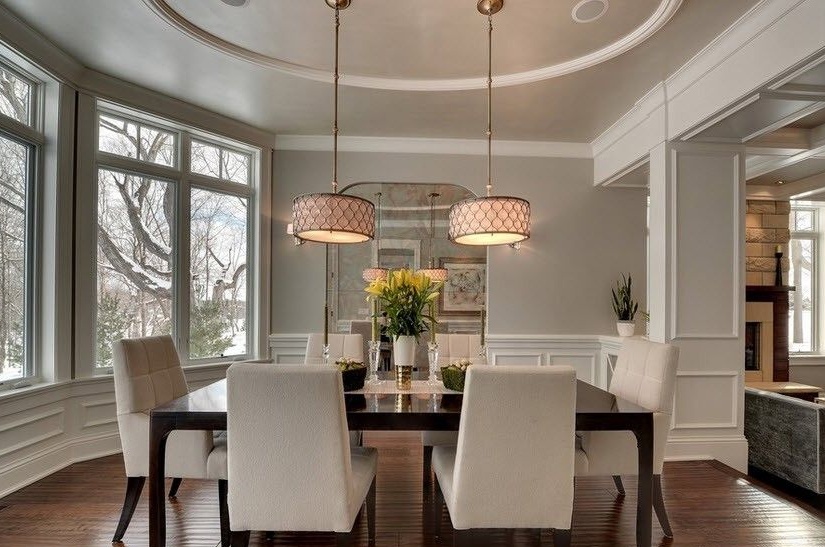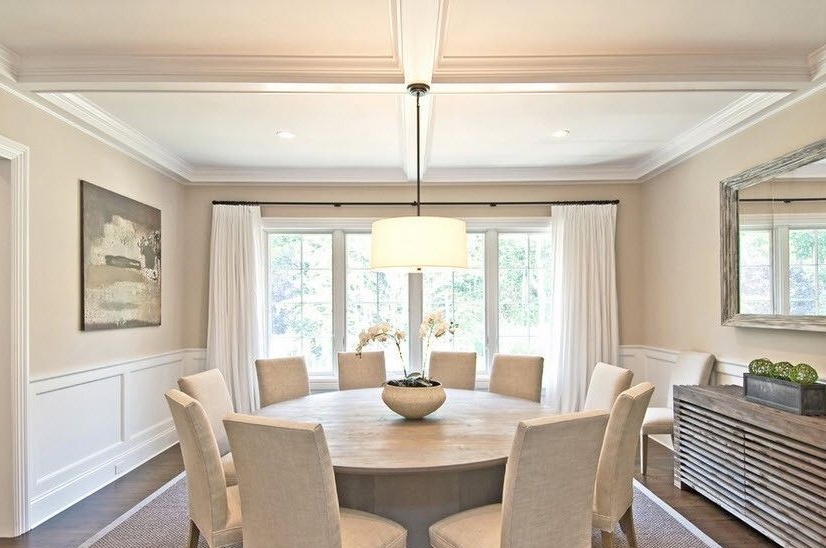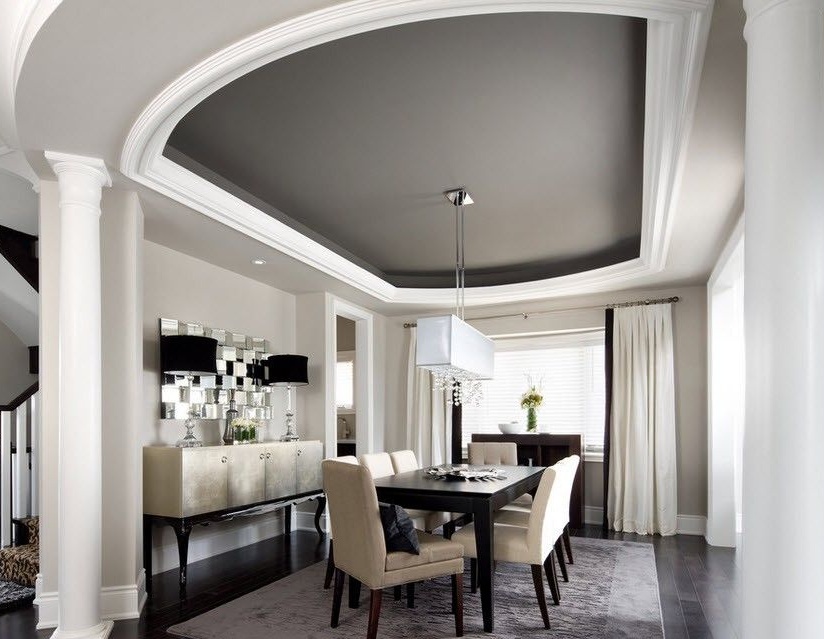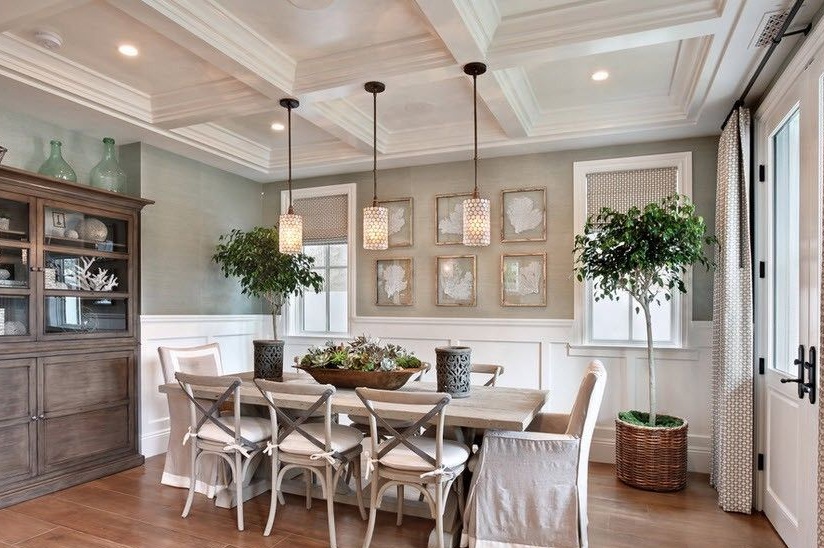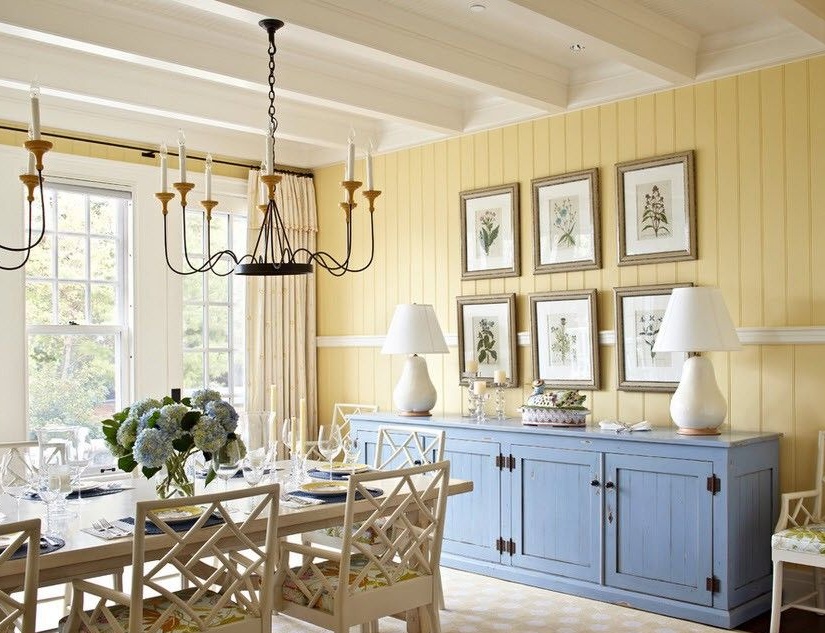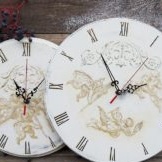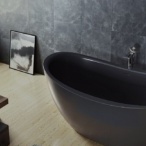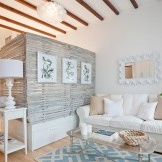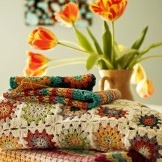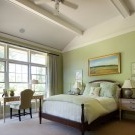Dinner Zone
Content:
In the interior of our apartment or house, we try to observe and harmoniously combine personal and functional space. Each of the interior zones has a purpose - rest, work, reception, sleep, a place for leisure. The dining area has several purposes: a place for family dinners, for receiving guests and relaxing. The main difficulties in the design and arrangement of the dining area are the balance between the defining features of various types of zoning.
Dining area
The first stage in creating a comfortable dining area is the allocation of space for its arrangement. There are proven placement options:
Dining area in the kitchen
The standardized way to arrange the dining area is so widespread solely because of the layout with a clear deficit of square meters. From the point of view of functionality and aesthetics, a significant space - from 1.5 meters should share the dining and working area. Designers resort to such a decision if it is not possible to take out the dining area or if the kitchen has an area of at least 17 square meters.
The location of the dining area in a small kitchen requires a clear technical layout in order to avoid functional conflicts. Most often, island or peninsular accommodation of the dining area is used, which allows you to spend the usable area as economically as possible. Of particular relevance are the corner dining areas, which reduce the cost of space and increase the number of serving places.
A large kitchen, with a quadrature of a full living room, allows you to place the dining area in any part of the room, sharing or connecting it to the working one using the interior.
Dining area in the living room (room)
As a rule, the living room has a large quadrature, which allows you to allocate a part to accommodate the dining area. Designers seldom use combined decoration, combining a dining area with a relaxation area. However, the similarity of functions of both zones allows the use of “soft” separation of space using screens, shelving or fractional interior decoration.
The location of the dining area in the living room has its own mandatory requirements:
- The zone should not be close to the exit.
- The zone must not be placed in a corner.
- The place of eating should be logically separated from the rest of the space.
If the living room is connected with the kitchen, the best way to arrange the dining area is the border between the work area and the rest area.
Dining area in a separate room
In design practice, this is the easiest way to design, since the focus is exclusively on the aesthetic features of the room. The dining area is usually located in the center and does not have special technical requirements.
If the room was originally intended for the dining room, then it has two exits to the kitchen and to the hall / living room / corridor. Thinking over the layout of an apartment or house, with the allocation of a separate room for the dining room, this technical parameter must be taken into account.
Organization of the dining area
Regardless of which room the dining area is located in, the organization begins by highlighting the requirements and general ideas about comfort. It is important to consider the possibilities of the space allocated for the dining area, as well as make adjustments taking into account individual preferences.
Table
For comfortable accommodation of one person at the table, a space of 0.7 meters is required.From these parameters, the table size for the dining area is calculated based on the placement of all family members behind it.
Well-established standards for a family of four:
- Height - 0.8 m.
- Length - 1.2 m.
- Width - 0.8 m.
- Diameter (for round countertops) - 0.9 cm.
Table placement options can be arbitrary, however, the most convenient of all is the island. A table that does not adjoin walls or objects of furniture allows more rational use of the entire plane of the countertop. The distance from the wall is strictly standardized and should not be less than half a meter (0.5 m).
Folding tables are very convenient to use and are used both for large spaces and for dining areas with a quadrature of up to 4 square meters. The main advantage of such tables can be a major disadvantage. When choosing a sliding table, it is important to consider its parameters, both in assembled and in disassembled state.
Modern furniture trends suggest the use of movable structures for the rational use of available square meters. Hinged and rotary tables perfectly complement the small dining area. The only thing worth paying attention to is the quality of the moving parts.
Not recommended
For a separate dining area, not combined with the working area of the kitchen, it is not recommended to use a bar counter in the form of a table. This type of countertop has a working purpose and cannot serve as a full-fledged dining table. The bar counter is used as a combined working and dining table only if the room requires it.
There are variations in the arrangement of the dining table combined with the bar counter, using the different levels of the two table tops. This is both a convenient and practical option for placing a dining area for kitchens with an area of up to 8 square meters.
The form
The spacious dining area allows you to choose a table of any shape, based solely on the requirements of the style of design. If the table is located in the center of the kitchen and is surrounded by a work area, then an oval worktop will be a practical choice. The working area is a place of constant operation, thanks to soft corners not only increases the usable area, but also reduces the likelihood of injury.
Aesthetic rules for furnishing a room suggest choosing the form of countertops that fit logically into the shape of the room. Round tables are suitable for a room (or a separate dining area) having a clear square or round shape. Oval and rectangular models of countertops are more applicable for rectangular and elongated rooms. Semicircular tables are universal in terms of combining with the room, but at the same time they are not practical at home: they occupy spaces more than any of the models and allow you to accommodate a small number of people. Tables with a non-standard geometric shape (triangular, pentagonal, octagonal, etc.) assume the placement of one person on each of the faces of the countertop.
When choosing a table shape, it is important to take as a basis the logical principle of composition composition. In a room or in a separately equipped zone, a center stands out - the fulcrum. This can be either the actual center of the room, or a corner, a wall, or just an arbitrary point in the square. A table is installed in the center, since it is the central figure in the composition of the dining area. The following geometric figures: chairs, additional furniture and, finally, walls, should logically complement the main, central figure.
Chairs
Chairs or other types of furniture for sitting are selected, first of all, in combination with a dining table. However, some tricks of furniture will allow more practical use of the space around the table. The size of the chair corresponds to the part of the table reserved for him. The larger the chair, the more part of the table is laid for him. If one of the goals is to place a certain number of people, then it is worth calculating not only the area of the table, but also the size of the chairs.
Benches and sofas are the best way to place a large number of people at one table, but they have disadvantages. Firstly, the sofa is difficult to move, which creates inconvenience when seating. Secondly, such furniture is not intended for a full dining area. Benches simplify the interior and make it “rural”, sofas modify the dining area giving it the appearance of a relaxation area.
Stools, which are often used to furnish a kitchen, are very practical in terms of placement. They can play the role of a chair - a separate seat; and also, lined up in a row, will accommodate the same number of people as on the bench. But, stools occupy the last position in the ranking of comfort and ease of use.
Lighting
In which part of the room the dining area would not be located, it should have a personal lighting system.
If the dining area shares the room with the work or rest area, the lighting is thought out comprehensively. In the kitchen, the working area is illuminated separately from the dining area, where each of the areas has central lighting and, possibly, additional. The living room has one central lighting. The dining area is illuminated with additional lighting fixtures located at the top of the wall or on the ceiling.
If the dining area is located in the studio and requires a logical separation from other areas, a “light curtain” is installed - a group of ceiling spotlights around the perimeter.
For emphasis in the central part of the dining area (on the table), decorative lighting is installed in the form of diffused warm light. Thus, the effect of candles is achieved, making the area as cozy and sophisticated as possible.
The best styles
The choice of style always depends on the personal preferences and capabilities of the zone. The most unpredictable, juicy and strange interior styles can be easily applied and adapted to the dining area. The list of the best styles is made of the most commonly used interiors:
Classic interior in monochrome. A smooth and bewitching game of halftones creates a soothing, light and aesthetically complete atmosphere. The materials and forms inherent in the classical style of the interior (Baroque, Empire, Rococo) emphasize the lightness and sophistication of a deeply thought-out color scheme.
How to issue?
- The use of antique plots of luxury, geometric lines. Textured wall cladding: wallpaper, plaster, stucco molding, suspended ceiling structures and luxury flooring: parquet, ceramics.
- Color schemes are selected based on one color. For a classic interior design, gray, beige, white, peach, lemon and ivory are more suitable. Additional color shades are arranged according to the conditions for creating a monochrome gamut.
- Massive furniture made of natural materials decorated with textiles and hand-carved. It is important that the chairs are wide and the countertop has a strictly geometric shape.
- Accessories and add-ons are selected individually: bronze candlesticks, plaster figurines, antique vases. The interior is complemented by mirrors in a gilded frame and paintings that defined the 17th century.
Gothic interior in a lightweight plot, with a minimum number of accessories and a special emphasis on the color schemes characteristic of this style, will create a spectacular plot of a medieval castle.
How to issue?
- The main materials are wood and rough stone. Metal is used exclusively for decoration. Massive ceiling beams, plain "cold" walls, lined with rough materials with high texture. The floor is faced with dark hardwood parquet or ceramic tiles, in color to the walls.
- Gothic colors are always cold: purple, gray-yellow, blue, green, complemented by gold and cupronickel accents.
- The furniture is close to the classical style, with sophisticated arched patterns and carvings.Chairs with low wide legs and a table with a very massive countertop without a tablecloth.
- Accessories and add-ons emphasize and create the character of the style: large metal (nickel silver) lamps, paintings with mythical creatures, as well as ikebans from dried flowers.
Provence is one of the best interior styles for decorating the dining area. Light and comfortable, filled with light, warm tones and not devoid of charm, the interior creates an elegant surroundings of the dining room.
How to issue?
- Cladding materials with a matte surface: PVC panels, staining and liquid wallpaper are well suited for wall cladding in the dining area. A single-level ceiling construction, without steps painted in tone to the walls and rough, dark flooring: geometric tiles with the effect of scuffing or parquet, will create the necessary contrast.
- The colors of the milk shade of beige tones: yellow, light green, lavender, terracotta are used as the dominant basis. In addition, the color of ocher and natural dark wood are suitable.
- Angular wooden furniture with wrought iron decorative elements. If a dining cupboard is provided in the dining area, it must be open.
- In the decorative component of the interior, accessories should have a handmade look. Any panels and paintings, embroidery on rough linen, wicker vases and fragrant dry herbs in them.
The Moroccan style is the most practical, since it incorporates all the historical and modern trends of European styles. The versatility of the style allows you to combine various forms and color palettes without departing from the whole plot.
How to issue?
- For the accent inherent in the Moroccan style, it is necessary to make a double wall cladding. The first layer is the background, made of plaster or granular wallpaper coatings; the second - decorative, arched and domed patterns using drawings or stucco moldings. The ceiling is tiled in one tone with the second layer of wall cladding. For flooring, you can use any natural material: ceramics, wood, stone.
- The color trends of the style are based on sunny shades: gold, yellow, red, orange, terracotta, tan. To create accents, you can complement the gamut with the traditional colors of Morocco - purple, indigo and pink.
- Moroccan-style furniture has slightly out of proportion shape. Lowered tables on curved wide legs with a massive countertop and geometric (round or square) chairs decorated with textiles. In rare cases, furniture can be decorated with forging.
- Accessories - glass and textiles. Bright murals, mosaic paintings, vases, mirrors and glass table lamps. Coarse textiles are used in any part of the decor, from the floor to the ceiling. Also, wooden boxes and wrought iron candlesticks can appear as an addition.

